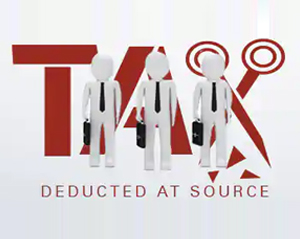The different formats for paying income tax in India include advance tax, self assessment tax, tax deducted at source (TDS), foreign tax credit, and so on. But when the financial year ends, you may realise that you have paid more tax than your actual tax liability. If that happens, you can apply for a tax refund.
What is an income tax refund?
An income tax refund is a refund of excess taxes that an individual or business has paid to the government. When you file an income tax return, you calculate your tax liability based on your annual income, tax deductions, expenses and other factors. If the amount of taxes withheld or paid throughout the year is more than the actual tax liability, you may be eligible for a refund. To claim an income tax refund, you need to file an accurate and timely Income Tax Return (ITR).
How to check for income tax refund status?
To enable taxpayers to check their income tax refund status, Indian government provides two channels.
A) Tracking your refund status through the income tax e-filing website
- Visit https://www.incometaxindia.gov.in
- Login with your username, password, and the captcha code
- Go to the section labelled "My Account"
- Select "View Returns/Forms"
- Choose the option "Income Tax Returns" from the drop-down menu
- Click on the hyperlink showing your acknowledgement number
You will be able to view your income tax refund status along with the reasons for refund failure, if any.
B) Confirming your income tax refund status on the TIN NSDL website
- Go to the website https://tin.tin.nsdl.com/oltas/refundstatuslogin.html
- Enter your PAN
- Select the relevant assessment year for which you want to check for income tax refund status
- Input the captcha code
- Click on "Proceed"
You will see a message based on your refund status.
Eligibility to qualify for tax refund
Situations that can make you eligible for tax refunds include:
- Excess Tax Deducted (TDS) on your salary
- More tax (TDS) deducted than the amount you owe on the interests of your bank deposits, securities, or debentures
- Advance tax you paid on self assessment exceeds the amount payable after deductions and exemptions
- Double taxation - your earnings in a foreign country are taxed in the country where you have the income as well as in India
- You are yet to declare tax-saving investments you possess
You must file your Income Tax Return (ITR)
To qualify for a tax refund, you must file your ITR. Submitting your ITR form is the only way to claim your refund. You must remember to provide adequate proof in support of the instruments you are using to get tax benefits. Such tax-saving tools can include house-rent allowance, life insurance premiums, health insurance, mutual fund investments, home loans, and more.
You must also ensure your return is verified within 120 days of filing your return. You can verify your ITR electronically through Aadhaar Number OTP or EVC generated through your bank account. Or else, you can also get your ITR physically verified. For this, you have to send your signed ITR-V to the Central Processing Centre via post.
The tax department will then process your ITR and pay your refund.
How do you claim an income tax refund?
To claim an income tax refund, you need to file an ITR before the specified due date. The due date for filing of return vary based on the nature of the person. Extension if any in the due date of filing Income Tax return is announced by the Income Tax Department. Your ITR must contain all relevant financial information and documents, such as your income sources, investments, tax exemptions and more for the concerned year. Make sure to cross-check the total advance tax payments in Form 26AS, like Tax Deducted at Source (TDS) and self-assessment tax. These taxes are paid to the government before you file your ITR and impact your overall tax liability.
Once you have submitted and verified your ITR, an assessment officer reviews the filed return to ensure compliance with the Income Tax laws. If the amount of prepaid taxes such as advance tax payments, TDS or TCS as reflected in Form 26AS, is more than the actual tax liability, you qualify for a tax refund. In such a case, the tax authorities will initiate the refund and credit the amount to your specified bank account. Once the refund is processed, you can monitor the income tax refund status on the official ITR filing website.
Check your Form 26AS
The tax you paid in excess must reflect in your Form 26AS, the annual tax statement. Otherwise, the tax department may reject your claim for a refund.
You should not have any unpaid dues
You may have some outstanding income tax from a previous financial year. Then, the income tax department may adjust your dues against your refund. In that case, you may no longer qualify for a reimbursement.
People like you also read ...






